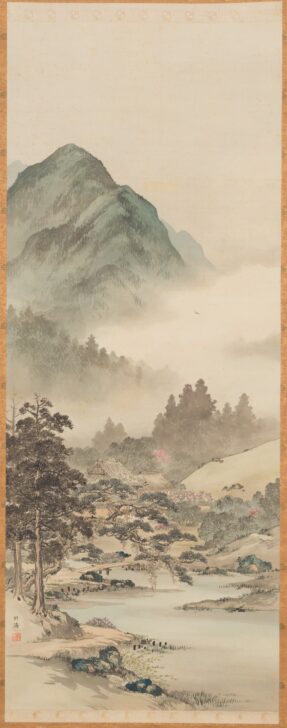Landscape
Takashima Hokkai

Description
Subject Matter:
"Nanga (southern painting) or Bunjinga (scholar or literati painting) artists took a form of Chinese painting as their model. The Chinese Ming dynasty artist/theorist Dong Qichang (1555–1636) established two categories of painting: northern painting, which was orthodox and academic (painters were formally trained and sold their work for a living); and southern painting, which was freely executed and expressive (ideally these artists were scholar-amateurs who did not paint for a living). Japanese literati artists, although forbidden to travel to China, studied and emulated the southern style of painting and Chinese art theories through imported books. Nanga painters generally declined to serve the samurai class, and preferred instead to survive by selling works to educated merchants and farmers. They often painted for each other and prided themselves as being intellectuals, poets, tea masters, raconteurs, as well as painters. They are most associated with smaller formats, such as hanging scrolls and fans, but several Nanga artists also produced screen paintings. Nanga artists primarily resided in Kyoto and Osaka."
“Japanese Painting: Nanga and Bunjinga School: Education: Asian Art Museum.” Asian Art Museum, education.asianart.org/resources/japanese-painting-nanga-and-bunjinga-school/.
Physical Description:
Painting of a blue mountain overlooking a house and river on a gold support with brown flowers.
Usage Rights:
If you are interested in using an image for a publication, please visit https://umma.umich.edu/request-image/ for more information and to fill out the online Image Rights and Reproductions Request Form.